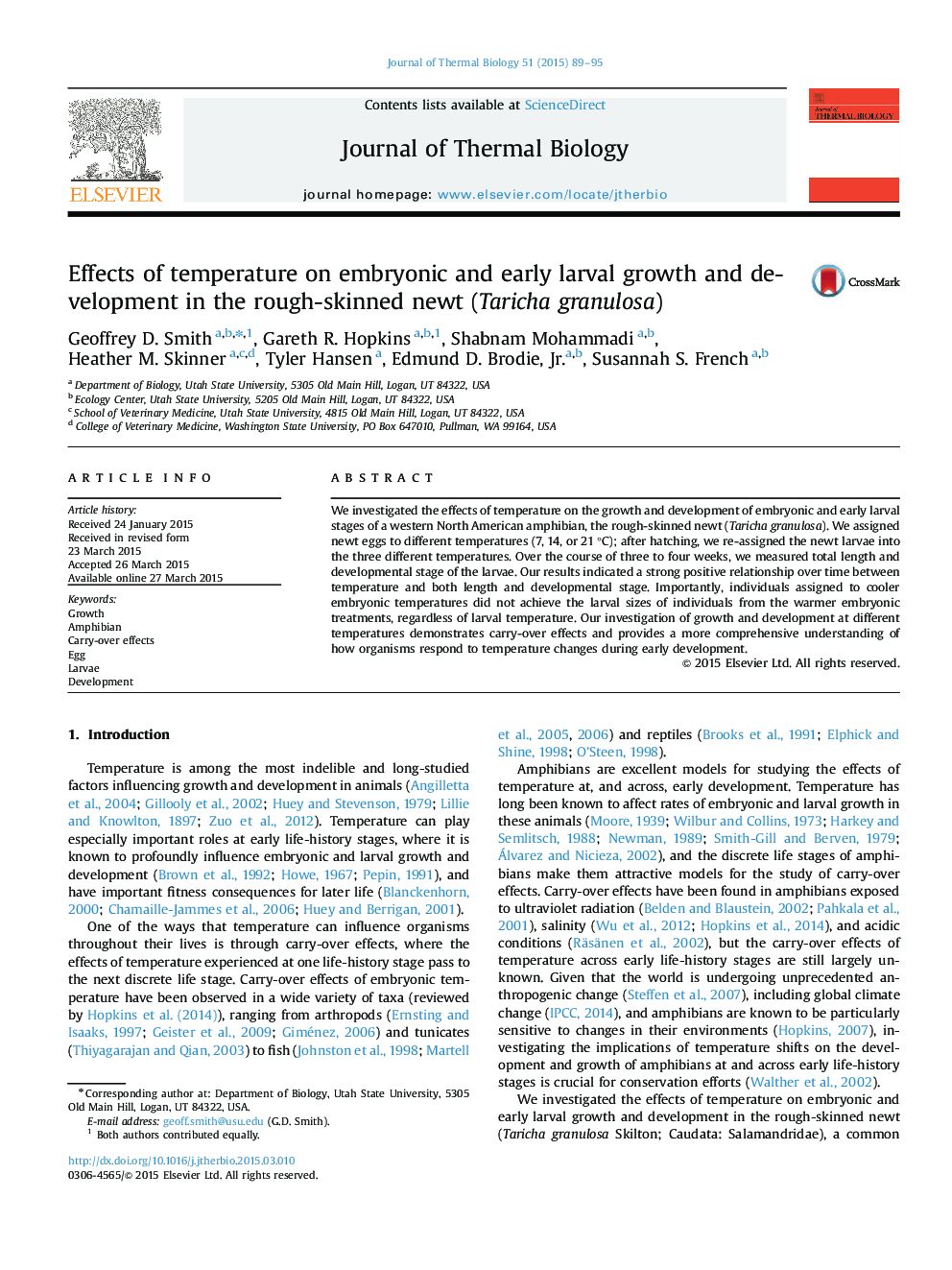| Article ID | Journal | Published Year | Pages | File Type |
|---|---|---|---|---|
| 2842807 | Journal of Thermal Biology | 2015 | 7 Pages |
•Temperature effects over two life stages were studied in newts.•Higher temperatures reduced time to hatching and increased development.•Larval growth and development rate increased with temperature.•Embryonic temperature continued to affect larvae post-hatching in different conditions.
We investigated the effects of temperature on the growth and development of embryonic and early larval stages of a western North American amphibian, the rough-skinned newt (Taricha granulosa). We assigned newt eggs to different temperatures (7, 14, or 21 °C); after hatching, we re-assigned the newt larvae into the three different temperatures. Over the course of three to four weeks, we measured total length and developmental stage of the larvae. Our results indicated a strong positive relationship over time between temperature and both length and developmental stage. Importantly, individuals assigned to cooler embryonic temperatures did not achieve the larval sizes of individuals from the warmer embryonic treatments, regardless of larval temperature. Our investigation of growth and development at different temperatures demonstrates carry-over effects and provides a more comprehensive understanding of how organisms respond to temperature changes during early development.
Graphical abstractFigure optionsDownload full-size imageDownload as PowerPoint slide
